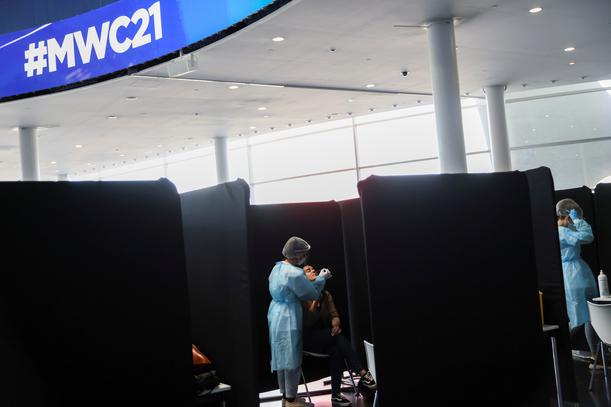
The Mobile World Congress insights shaping our conversations with tech and telco leaders
Mobile World Congress (MWC), the leading event in the connectivity industry, was held live in Barcelona earlier this month. It’s a showcase for companies to launch their newest devices and experiences for business and entertainment. This year, the first time the event was held in person since 2019, participants could try out virtual time travel, a 4D metaverse roller coaster, musical sunglasses, digital tattooing, and much more.
Dozens of McKinsey colleagues attended, delivering keynotes, moderating panels, and leading workshops. Bob Sternfels, our global managing partner, helped set the stage in his keynote by outlining the immense opportunities that telcos have to drive sustainable and inclusive growth, highlighting some important elements that will be needed to achieve this: collaboration, bold leadership, and innovative business models.
Coming back together in-person was key, our colleagues said. “I am zoomed out,” says Tarek Elmasry, a McKinsey senior partner. “In-person meetings here are the lifeblood of what we do.”
In this post, attendees reflect on what they heard and learned at the event and how these insights are informing their client conversations and plans going forward.
“I was so pleased—and surprised—by the tremendous confidence of telcos overall,” says Ferry Grijpink, a partner. “They met the challenges of the pandemic: the infrastructure worked, businesses accelerated their use of digital technologies at an astounding rate, and it was really clear that without telcos there would be no working from home, no e-learning, no telehealth.”
“There was a very strong message of: we can do this!” he adds.

Telcos also made a loud and clear commitment to sustainability, according to Ferry, not just for reducing their own carbon footprints but in positioning themselves as enablers for other industries. They presented use cases in transportation, manufacturing, and agriculture. For example, in farming, drones connected to the cloud are photographing and monitoring fields to finely calibrate and reduce the use of fertilizers and pesticides.
However, the challenge still remains for telcos to monetize their tremendous investments in 5G. According to Ferry, progress there has been slow. “For the B2C side, they need to start differentiating their products so consumers will start paying for their advanced capabilities, such as increased speed and reduced latency for gamers,” he says. “For B2B, they need to sell more than connectivity and develop business solutions through partnerships that offer added value.”
B2B is an especially promising growth market, says Dr. Karolina Sauer-Sidor, a partner. The number and types of channels customers expect a business to offer has doubled in six years, from the early basics of email and phone to the procurement portals and mobile apps of today.
VideoMWC2022 Highlights“Operators can focus on developing next-gen connectivity products such as SD-WAN and 5G private networks and help clients build targeted businesses within the ICT ecosystem, such as services for banking, healthcare, and learning,” Karolina says. “And operators can differentiate themselves by offering exceptional sales, digital, and analytics capabilities.”
Finally, 5G and cloud-native networking will be foundational to any such development effort. “They will allow operators to innovate more quickly and easily,” Karolina says, “and scale more efficiently—while also reducing risk.”
Technologies are so fast-moving and complex, few operators can go it alone. And even when they do partner, they are having mixed success. McKinsey senior partner Venkat Atluri explains: “Deciding what role to play in an ecosystem and how to build an ecosystem are critical to success: it has to be treated as a transformation.”
Telcos, Venkat says, are finding greater opportunities for creating new products in developing countries across Africa and Southeast Asia by partnering with adjacent industries."We see operators crossing over and launching new products in banking, healthcare and other industries,” he explains, “while the more developed markets in Europe and North America offer intriguing opportunities to create new services based on edge computing. This will require partnering with tech developers and cloud partners.”
As a first step to partnering, Venkat says, all participants need to define the shared customer promise and decide the role they will play: to orchestrate or participate? Other decisions include assessing infrastructure and talent needs; and defining the operating model to share the value. For instance, should it be a fee-based structure or a sharing of upside including equity?
“Any collaboration should be approached with the thinking that the relationship should deliver value of 1+1=10,” Venkat concludes.
}})